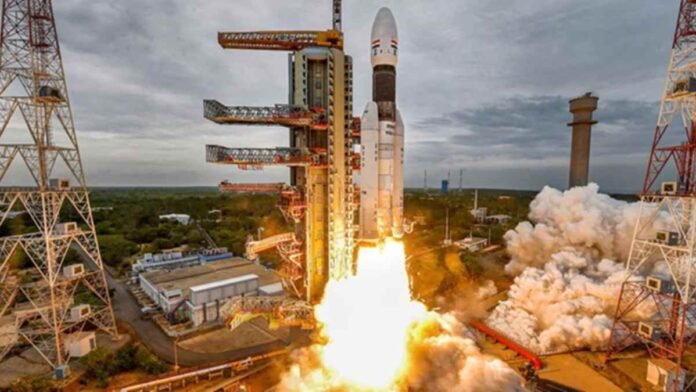The Chandrayaan-3 mission, the Indian Space Research Organization’s (ISRO) third trip to the moon and its second attempt at a soft landing, will lift off on July 14 at 2:35 p.m. from the Satish Dhawan Space centre in Sriharikota.
The Chandrayaan-3 mission’s launch date and time have been set for July 14 at 2.35 p.m., with a potential moon rendezvous on August 23 or 24. Earlier, ISRO Chairman S. Somanath had stated that a launch window was open between July 12 and 19 for the project.
“Chandrayaan-3 will be launched on July 14 at 2.30 p.m. We might be prepared for a lunar landing by the last week of August if the launch occurs on that day. The moon’s rising determines the date. There must be sunlight when the landing occurs. A lunar day is equal to 15 days on Earth. For a specific place, you will have sunshine for 15 days and then none for the next 15, Somanath said on Thursday outside of the G20 summit on the space economy.
The launch of Chandrayaan-3 will take place on July 14 at 2.30 p.m. We could be ready to land on the moon by the last week of August if the launch takes place on that day. The date is determined by the moon’s rising. The landing must take place in the sunlight. One lunar day is equal to 15 Earth days. Somanath stated on Thursday outside of the G20 summit on the space economy that for a certain location, there will be 15 days of sunlight followed by 15 days without sunlight.
Therefore, if we had to land on the first of the moon’s 15 earth days of sunlight, which is also the first, we will still have at least 15 days left for the mission. This is the day when we are going to arrive, and if all goes according to plan, it will be either August 23 or August 24 depending on the calculations. Not on August 25 or 26, please. When there are 15 days of sunshine again in a month, we won’t land and instead will wait. As a result, the date may be September 20 or later, according to Somanath.
The ISRO chairman cited the Chandrayaan-3 mission’s incorporation of several lessons learned from the failure of the Chandrayaan-2 lander, including a provision for landing at higher speeds and new technology for assessing the speed levels as the lander approaches the landing site on the moon, as a key factor in the space agency’s second attempt to land on the moon.
“Chandrayaan-2 failed at the landing stage, therefore we gathered the fundamental information about the landing and performed an analysis, a simulation, and a study of the issues in the landing stage. We have not received any debris since the lander landed onto the moon, therefore the data that was captured at the time of the accident is all we have. To mimic the situation, we used the data. We’ve discovered that the landing failed for three or four reasons, Somanath stated.
On July 15, 2019, the Chandrayaan-2 mission was launched. On September 7, 2019, the landing maneuver was carried out. Before the lander ended up spinning over 410 degrees, departing from a calibrated spin of 55 degrees, and making a hard touchdown on the moon, the landing appeared to be proceeding as planned.
NewsIndiaAs Chandrayaan-3 prepares to launch on July 14, ISRO believes lessons learned from the previous landing attempt provide optimism.
As Chandrayaan-3 prepares to launch on July 14, ISRO believes lessons learned from the previous landing attempt provide optimism. A fly-by research expedition to the moon in 2008 called Chandrayaan-1 found some evidence of water on the moon.



